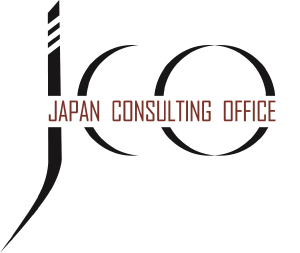(Autor: Nikolaus Mach-Hour, Head of JCO Germany / VP global strategy)
In this last part of our four-part series, I would like to highlight some of the trends regarding how JCO customers are about to reshape their organisations and business models.
6. Changes in business strategy
Japanese business culture is traditionally rather long-term oriented when it comes to planning, investment, R&D and distribution.
Japan is home to 10,000s of companies that were founded over 100 years ago so many of our customers pride themselves in upholding the teachings of their founders, often laid down in philosophical writings.
When we combine these facts with a strong emotional attachment to the „golden era“ when Japanese technology was widely successful on a global scale because of its impossibly high quality standards and innovative design, it is easy to understand why many companies have long been very reticent about sunsetting product groups that were at the “core” of their initial success. Often the executives at the top level came up through as engineers on these products which made it very hard for them to ”let go”…
But the tectonic shifts in the global economy have necessitated a thorough re-evaluation of the path forward for many of our customers.
A. Countless companies, often hidden champions in their markets, have started to establish specific R&D centers, innovation hubs, startups and incubators in and outside Japan for totally new fields of business.
While Japan had always been a nation spending more of her GDP on R&D than most nations (usually around 3.25% in the last 10 years), the visible change lies in the fact that this immense investment of resources and staff into new technologies and products does not happen “hidden within company walls” in order to shield it from the public and competitors any longer. These moves are being put front and center of the companies´ PR, IR and HR strategies.
This might, of course, mean that an investment or new idea may very well turn out to be not successful for “everyone to see” which the typically rather risk-averse Japanese companies might not have been prepared to accept in the past.
In short, a renewed “no risk, no reward” spirit is visible.
B. A lot of former typical Shousha (= trading houses) have moved away from the old “man in the middle” business model to effectively reinvent themselves after a certain period of stasis. These days, they are running rather powerful VC programs while also establishing countless partnerships with smaller non-Japanese companies from all around the world that are working on future-facing products and solutions. In a way, they are now in the business of “trading ideas and long-term visions”!
C. Many of our larger customers are consolidating their countless daughter companies into one large entity within a relatively short time frame, thereby streamlining processes, reducing overhead and allowing for a unified “global strategy”.
On top of that, projects aiming at digital transformation are being launched by almost every single one among JCO’s customers.
The traditionally rather isolated and often home-grown IT systems in Japan are now gradually being connected and/or merged with systems used in the rest of the organization outside of Japan.
Where in the past, 2 or more systems might run in parallel in the same global company there is now a tendency to simply choose the software solution that makes the most sense, even if that means discarding the system and the processes that the Japanese part of the company had been used to.
D. At the same time, more drastically than ever before, companies are making moves to sunset whole product lines and/or sell off non-profitable parts of the company if it is clear that certain products and businesses have no future.
In the past, there was often an implicit promise by the larger companies to the regional administrations in Japan to provide a certain number of jobs in a specific prefecture.
But in the future, we can expect an ever growing concern for a numbers based “return on investment”.
So, certain subsidiaries might be moved to a holding company to give them a final chance to prove that their business is viable. If it turns out that this is not the case they are likely to be sold off or closed down.
Whereas this might seem like standard business in a Western corporation, in Japan making the hard choices is not always easy.
E. One more trend that needs to be mentioned is a new openness to collaborate with other Japanese companies that, as competitors in similar fields, would not have been regarded as suitable partners in the past. Often, the concern was to jeopardize one’s own market share in Japan by doing so. Some might have said that former “keiretsu” demarcations were still in place to some degree.
But companies have come to understand that this former reluctance has no place in times of ever-growing investment needs for new technologies that no company can shoulder alone.
Certain JCO customers, often those where the company name is a clear indication of the strong connection to a sunsetting market (e.g. OEMs for internal combustion engine parts), are currently announcing new company names.
All this is a clear sign that the management has understood the sign of the times and sees the need for fundamental reinvention.
This means that regardless of how successful a company was in a certain field and how sacrosanct old traditions, products and processes were until now, the time has come for a full repositioning in order to not only survive but lay the groundwork for a new type of successful business.
Looking into the future
As I shared at the beginning of this article series, I have been working with Japanese colleagues, clients and partners for over 30 years. Now more than ever, I feel quite hopeful about the will and the ability of Japanese management and their staff to reinvent their business model and rethink their entire modus operandi.
Here’s to another interesting 30 years!
Nikolaus Mach-Hour







